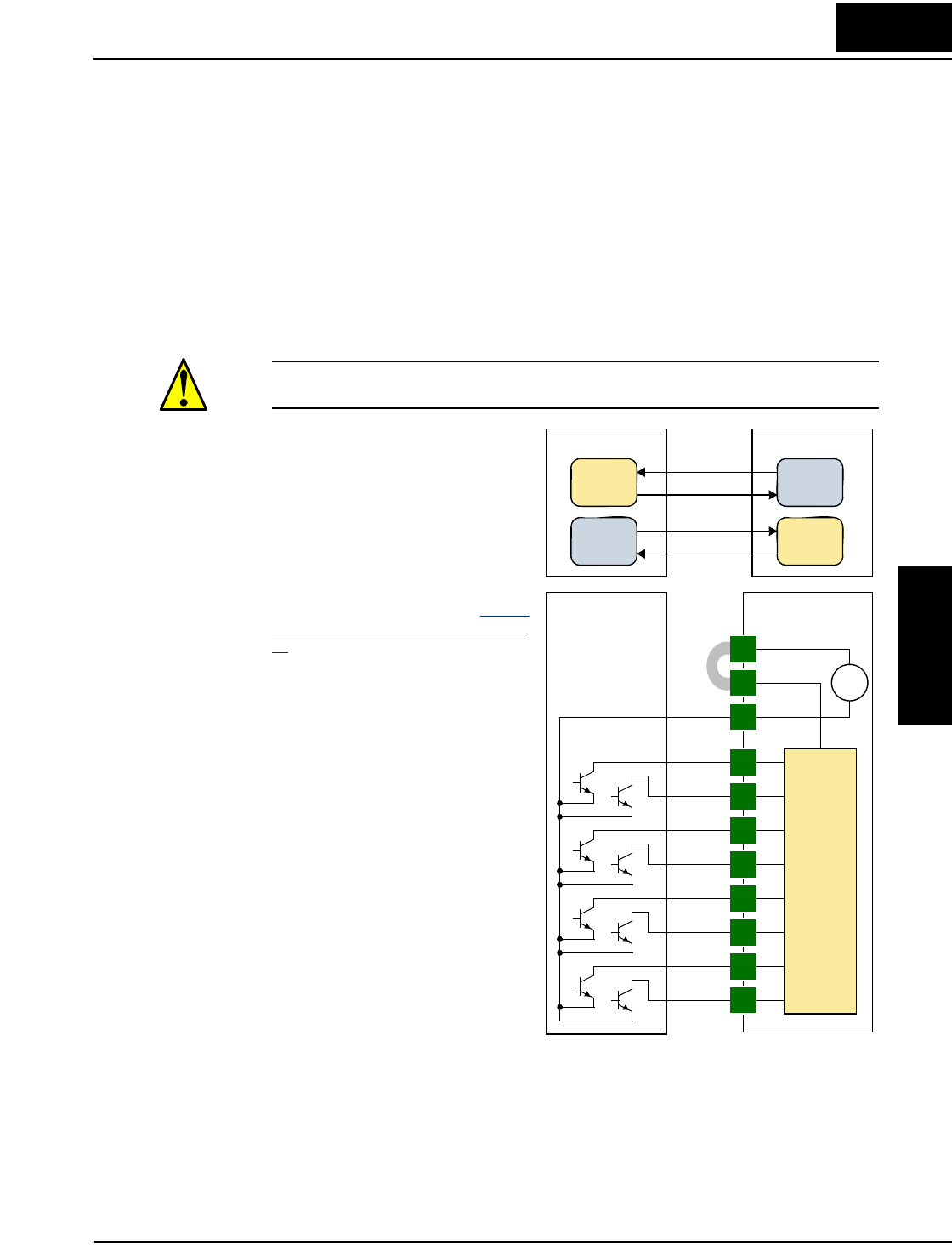
SJ300 Inverter
Operations
and Monitoring
4–7
Connecting to PLCs and Other Devices
Hitachi inverters (drives) are useful in many types of applications. During installation, the
inverter keypad (or other programming device) will facilitate the initial configuration. After
installation, the inverter will generally receive its control commands through the control logic
terminals or serial interface from another controlling device. In a simple application such as
single-conveyor speed control, a Run/Stop switch and potentiometer will give the operator all
the required control. In a sophisticated application, you may have a programmable logic
controller (PLC) as the system controller with several connections to the inverter.
It is not possible to cover all the possible types of application in this manual. It will be neces-
sary for you to know the electrical characteristics of the devices you want to connect to the
inverter. Then, this section and the following sections on I/O terminal functions can help you
quickly and safely connect those devices to the inverter.
CAUTION: It is possible to damage the inverter or other devices if your application exceeds
the maximum current or voltage characteristics of a connection point.
The connections between the inverter
and other devices rely on the electrical
input/output characteristics at both ends
of each connection, shown in the
diagram to the right. The inverter can
accept either sourcing or sinking type
inputs from an external device (such as
a PLC). A terminal jumper configures
the input type, connecting the input
circuit common to the supply (+) or (–).
Detailed wiring examples are in “
Using
Intelligent Input Terminals” on page 4–
11. This chapter shows the inverter’s
internal electrical component(s) at each
I/O terminal and how to interface them
with external circuits.
In order to avoid equipment damage and
get your application running smoothly,
we recommend drawing a schematic of
each connection between the inverter
and the other device. Include the
internal components of each device in
the schematic, so that it makes a
complete circuit loop.
After making the schematic, then:
1. Verify that the current and voltage
for each connection is within the
operating limits of each device.
2. Make sure that the logic sense
(active high or active low) of any
ON/OFF connection is correct.
3. Verify inputs are configured
correctly (sink/source) to interface
to interface to any external devices (PLCs, etc.).
4. Check the zero and span (curve end points) for analog connections, and be sure the scale
factor from input to output is correct.
5. Understand what will happen at the system level if any particular device suddenly loses
power, or powers up after other devices.
5
3
1
7
6
4
2
8
Other device
Input
circuit
Output
circuit
SJ300 Inverter
Input
circuit
Output
circuit
Input
circuits
Inverter
Common
PLC
PLC
P24
CM1
+
–
24VDC
Jumper
Signal
Return
Signal
Return


















